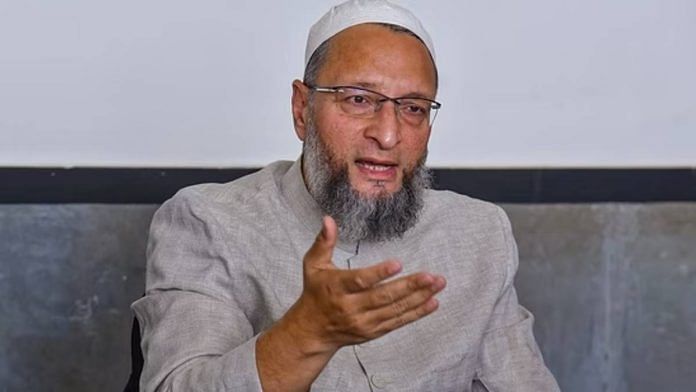As preparations for the inauguration of the Ram Mandir in Ayodhya near completion, India eagerly anticipates the culmination of a 500-year journey—the return of Lord Ram to his birthplace.
Yet, in a recent impassioned speech, All India Majlis-E-Ittehadul Muslimeen (AIMIM) chief and Hyderabad MP Asaduddin Owaisi declared that the memory of Babri Masjid would forever remain etched in his mind. Addressing Muslim youth about the mosque, he emphasised that the sacred site, where the Quran resonated for five centuries, is now beyond their control. He acknowledged the loss of their masjid and questioned the evident pain in their hearts amidst the unfolding events at the site.
Leaders should rise to foster reason, recognising that Ayodhya, which many in the Hindu community perceive as a miscarriage of justice, symbolises historical wounds, entrenched divisions, and unresolved grievances that continue to haunt the nation’s socio-political fabric. Unfortunately, figures like Owaisi, who tend to incite emotions rather than promote understanding, often dominate the discourse. Just as Mecca/Medina holds significance for Muslims and the Vatican for Christians, Ayodhya carries profound importance for Hindus, akin to Jerusalem for Jews. Grasping this civilisational reality could greatly enhance the worldview of young Muslim individuals.
Despite the fact that most Indian Muslims have embraced the verdict and moved forward, it would benefit them to look beyond the persistently rigid narratives of some leaders. Solely focusing on the demolition of a ‘mosque,’ which had been non-operational for centuries on top of a structure with underlying ruins, may not provide the complete historical perspective. Archaeologist KK Muhammed, in his autobiography, highlighted the discovery of a Hindu temple during excavations and criticised certain historians for potentially misleading Muslim communities.
Furthermore, it’s important for Muslim youth to understand that, according to Islam, constructing a mosque on disputed land goes against Islamic principles, which emphasise clear ownership for mosque construction.
The late Islamic scholar Maulana Wahiddudin, a Padma awardee, was known for denouncing radical interpretations of Islamic texts and advocating for moderate behaviour. He not only translated the Quran into Hindi, English, and Urdu but also authored over 200 books. Maulana Wahiddudin urged Muslims to relinquish claims on the disputed land in Ayodhya. In a Times Now article, he referenced Caliph Umar’s visit to Palestine, highlighting his considerate approach toward existing churches and synagogues. Umar even offered namaz at a distance from these structures, demonstrating foresight to prevent future conflicts.
Also read:
Don’t forget the past
An often overlooked aspect of the Ayodhya conflict is the failure to comprehensively address the post-Babri demolition riots. Both Hindus and Muslims were involved in gruesome violence against each other during this period. Recognising the brutality of events such as the 1991 Bombay blasts, orchestrated by underworld gangsters with support from Pakistan, is vital.
Rather than perpetuating a sense of victimhood within the communities, there should be a collective effort to extract valuable lessons from such tragedies. The focus should be on understanding how to handle conflicts, emphasising the importance of avoiding reactionary responses and, actively seeking solutions.
I can’t help but wonder, after witnessing the sheer brutality and the loss of thousands of lives among Hindus and Muslims, why is Owaisi so determined to fan the flames of that very sentiment? What drives him to relentlessly stoke emotions that have already proven to be deadly? It’s disheartening to see someone persisting in a path that has caused so much pain and suffering. It’s poignant to hear about experiences of growing up in the ’90s, where discussions about Ayodhya and the Babri Masjid filled the living rooms. Three decades later, with people having moved on and willing to view the issue from various perspectives, it’s perplexing that figures like Owaisi persist in reigniting the flames of the past.
The question lingers: What do they seek to achieve? Is it to deny the historical truth about Babar, an invader who expressed disdain for India and destroyed many Hindu temples?
The plea for truth and reconciliation seems to fall on deaf ears, while Owaisi’s perpetual confrontational stance prevails. In the face of this, Ayodhya stands as a symbol of the Hindu civilisation’s refusal to be bullied by Babar and his admirers. It’s a complex narrative, and the call for understanding and compromise seems to echo louder than ever.
Amana Begam Ansari is a columnist, writer, TV News Panelist. She runs a weekly YouTube show called ‘India This Week by Amana and Khalid’. She tweets @Amana_Ansari. Views are personal.
(Edited by Prashant)



